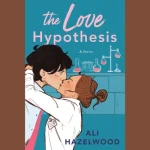When you first hear the term “The Paradise Problem”, you might imagine a beautiful place with hidden challenges, or perhaps a situation where things look perfect on the surface but are far from it underneath. As someone who’s explored countless books and real-life case studies on societal challenges and human behavior, I’ve found this concept fascinating—not only because of its narrative potential but also due to the real-world implications it carries.
In this post, we’ll explore what the Paradise Problem is and why it matters, break down its causes and consequences, and even look at practical strategies to address it. By the end, you’ll understand the depth of this concept and see why it resonates beyond books or theories.

Content
What is the Paradise Problem?
At its core, The Paradise Problem meaning revolves around the discrepancy between appearance and reality. It’s when environments, systems, or situations seem ideal but conceal hidden challenges that can disrupt progress or happiness. Think of it as a “perfect paradise” that’s not truly as perfect as it seems.
For example, a community may boast of low crime rates, vibrant parks, and bustling cafes. But beneath the surface, there might be issues like social inequality, mental health struggles, or environmental degradation. This mismatch creates what researchers and sociologists refer to as The Paradise Problem.
Causes and Consequences
Understanding the root causes of this novel helps us see why it arises so often:
- Idealized Expectations: People or societies set overly high expectations, imagining perfection where complexity is inevitable.
- Hidden Flaws: No system or community is flawless. Overlooking small problems can snowball into larger issues.
- Perception Bias: Humans often focus on what is visually or superficially appealing, neglecting deeper analysis.
The effects of this novel are multifaceted:
- Individuals may feel disillusioned or frustrated when reality doesn’t match expectations.
- Communities may suffer from ignored structural issues, leading to social or environmental consequences.
- Decision-making can be impaired when stakeholders operate under a false sense of security.
Real-Life Case Study: The Coastal Retreat
Let me share a personal observation from a real-life scenario. Last summer, I visited a coastal town marketed as a serene paradise getaway. Pictures on travel websites promised pristine beaches, thriving local markets, and vibrant community events.
At first glance, everything seemed perfect. But after a few days, it became evident that the paradise had its own hidden challenges:
- Waste Management Issues: Trash disposal systems were insufficient, creating unpleasant areas despite the otherwise clean appearance.
- Housing Shortages: Locals struggled with affordable housing as tourism boomed.
- Community Tensions: Increased seasonal tourism caused friction between residents and visitors.
This experience is a prime example of what is the Paradise Problem and why it matters: the town looked ideal, yet underlying issues revealed the complexity behind the “paradise” façade. By observing and analyzing these problems, I could understand the importance of acknowledging hidden challenges before declaring something perfect.
Read More About: Four Found Dead
How It Appears in Different Contexts
While communities and tourism destinations are one example, the Paradise Problem exists in numerous areas:
- Workplaces: A company may boast of employee perks and open-office culture, but high turnover and burnout may tell a different story.
- Education Systems: Schools may look well-funded with modern facilities, yet gaps in teacher support or student well-being may exist.
- Personal Life: Social media often portrays idealized lifestyles, hiding struggles with relationships, finances, or mental health.
Recognizing these patterns is essential to avoid the trap of perfection illusion.
Strategies to Solve
Addressing the Paradise Problem requires awareness and proactive strategies. Here are a few approaches that can make a tangible difference:
- Critical Observation: Don’t take appearances at face value. Analyze data, observe trends, and seek multiple perspectives.
- Community Engagement: Encourage dialogue among stakeholders to uncover hidden challenges.
- Sustainable Solutions: Implement changes that address root causes rather than temporary fixes.
- Transparency: Open communication reduces unrealistic expectations and builds trust.
By adopting these strategies, individuals, communities, and organizations can navigate the challenges of the Paradise Problem effectively and prevent negative consequences from escalating.
Why Understanding the Paradise Problem is Important
From a broader perspective, understanding the Paradise Problem equips us to make informed decisions, both personally and professionally. Whether choosing a vacation spot, investing in a project, or evaluating community development, recognizing hidden challenges ensures better outcomes.
It also cultivates a mindset of resilience and adaptability, which is invaluable in today’s complex world. The Paradise Problem teaches us that appearances can be deceiving, and real insight comes from digging deeper and engaging thoughtfully.
Key Takeaways
- The Paradise Problem highlights the gap between perception and reality.
- Causes include idealized expectations, hidden flaws, and perception bias.
- Consequences affect individuals, communities, and organizations.
- Real-life case studies, like the coastal retreat, illustrate how paradise can conceal problems.
- Strategies such as critical observation, transparency, and sustainable solutions help address the problem effectively.
By understanding and addressing the Paradise Problem, we can approach life’s challenges with greater clarity and make more informed, impactful decisions.
Final Thoughts
The Paradise Problem reminds us that perfection is often an illusion. Whether in communities, workplaces, or personal life, what appears flawless on the surface can hide significant challenges. By recognizing these hidden issues, analyzing situations critically, and applying thoughtful strategies, we can navigate complex realities more effectively.
Understanding the Paradise Problem doesn’t just make us more informed—it helps us make wiser decisions, build resilient communities, and approach life with clarity and honesty. Remember: the real beauty lies not in the illusion of perfection, but in the ability to face challenges and create meaningful solutions.
If you enjoyed exploring this novel, check out our review of The Life Impossible for another compelling read.
FAQs
What is The Paradise Problem book about?
It’s a romantic comedy by Christina Lauren, exploring love, relationships, and humor in an engaging story.
Is The Paradise Problem spicy?
It has mild to moderate romantic scenes, suitable for readers who enjoy light romance.
Is The Paradise Problem a stand-alone?
Yes, it’s a complete story you can read independently without needing other books.
Who should read The Paradise Problem?
Fans of romantic comedies, lighthearted love stories, and Christina Lauren’s humor will enjoy this book.

Jay’s the resident literary connoisseur. He dissects classics and uncovers hidden gems. Expect his insights to enrich your reading journey, one page at a time.










